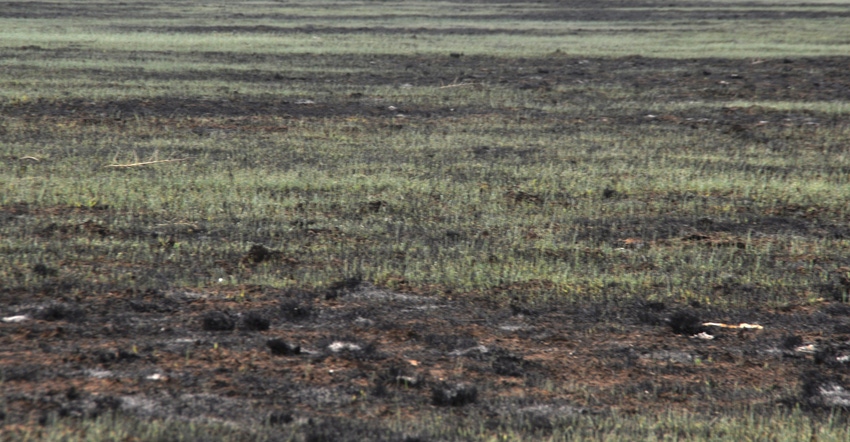
The big corner hedge posts and the brush-filled canyons were still smoking from the worst wildfire in Kansas history when the semis loaded with donated bales of hay, fence posts, wire and other supplies began rolling into Clark and Comanche counties.
Right behind them came waves of volunteers — Kansas Farm Bureau members, kids in FFA, senior citizens who said they had some time on their hands — to help clean up the fields, bury the cattle and rebuild the fences.
The response of rural America to the wildfires of early March has become its own story of an outpouring of generosity to help fellow farmers recover from a horrific disaster.
At first, it was mostly nearby farmers and ranchers in Kansas, Texas, Oklahoma and Colorado who responded. As the days went by and word of the extent of devastation spread, help has come pouring in.

DONATED HAY: Within hours of the end of wildfires in southern Kansas, Oklahoma and Texas, loads of hay were on the way from neighboring farmers and ranchers. When the need for hay was met, the trucks began bringing fence posts, wire and other building materials.

Strangers from hundreds of miles away are offering what they can share to the effort. Rep. Tom Hurst, R-Meta, Mo., recently led a convoy of mid-Missouri farmers on a 1,200-mile, round-trip trek to deliver resources to communities in their neighboring state.
When the workers at Osborn Barr, an agriculture and rural marketing agency with offices in Missouri, Kansas and Tennessee, heard the stories of fire victims and the relief effort, they wanted to help, too. The agency committed $10,000 to the Kansas Farm Bureau donation site to help with the relief effort and pledged to continue raising money through the month of April. The agency will match any additional money that employees donate, dollar for dollar, said Neil Caskey, Osborn Barr executive vice president.
"It's a small thing," Caskey said. "We are a fairly small agency. We are also looking for opportunities to go out and help with our own labor. We have an office in Kansas City, and we have employees who live in Kansas and who know people in the area."
He said the pictures he has seen are horrifying.
"I am sitting here safely in St. Louis, and I am just shocked at what people have gone through," he said. "But the thing that is amazing is the way rural America is rising up across the entire Midwest and beyond to come to the aid of their neighbors. That same spirit that defines a farmer or rancher’s commitment to the land and livestock they work defines their commitment to each other, in times of great celebration and in times of sorrow,” Caskey said.
He said that the tradition of neighbor helping neighbor and farmer helping farmer is part of the tradition of American agriculture and makes him proud to be part of the industry.
As of April 5, the donations page at kla.org had collected $1.5 million, and donations were still rolling in steadily from all over the U.S. and even some from Canada, said KLA spokeswoman Scarlett Hagins.
She said the donation page is being held open because of the volume still coming in daily, but at some point, it will close to allow funds to be dispensed to rancher applicants.
Applications for help are still coming in steadily, as well.
"I know that our producers are very grateful for the help," she said.
A committee of KLA and county leaders will be the decision-making body and will choose the recipients of funding based on the details of the applications, she said. Membership in KLA or KFB is not required for producers to be eligible for help.
Perhaps the best news for the fire-stricken region is the passage of time and the healing power of nature.
After end-of-March soaking rains, the dismal, black "moonscape" of the days following the fire is showing the flush of new green grass and will soon be resplendent with prairie wildflowers.
The ranchers who carried out the grim task of shooting fatally wounded cattle and counting and burying carcasses will continue the slow, steady work of recovery. With a little help from their friends.
About the Author(s)
You May Also Like




